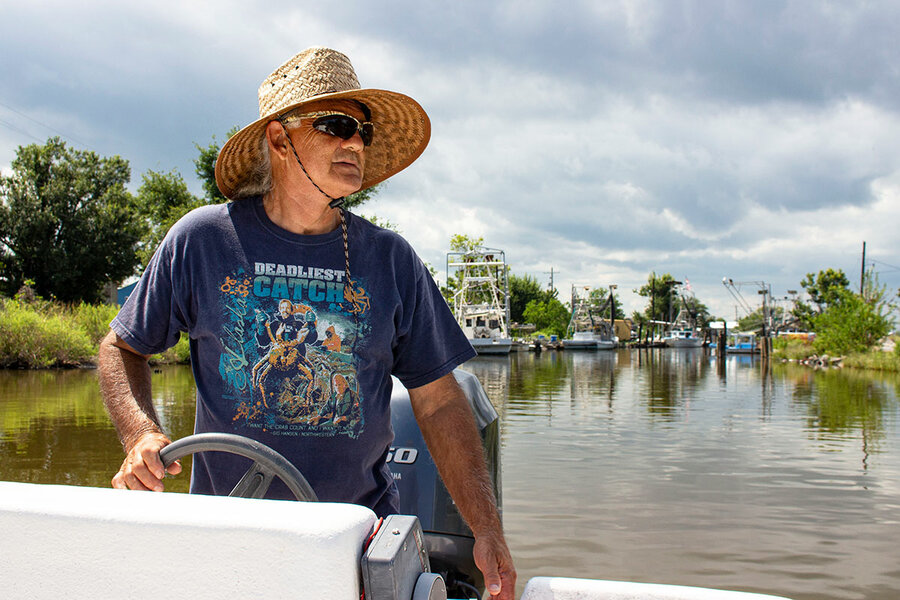Original publication by Ocean Malandra for mongabay.com on 23 January 2023
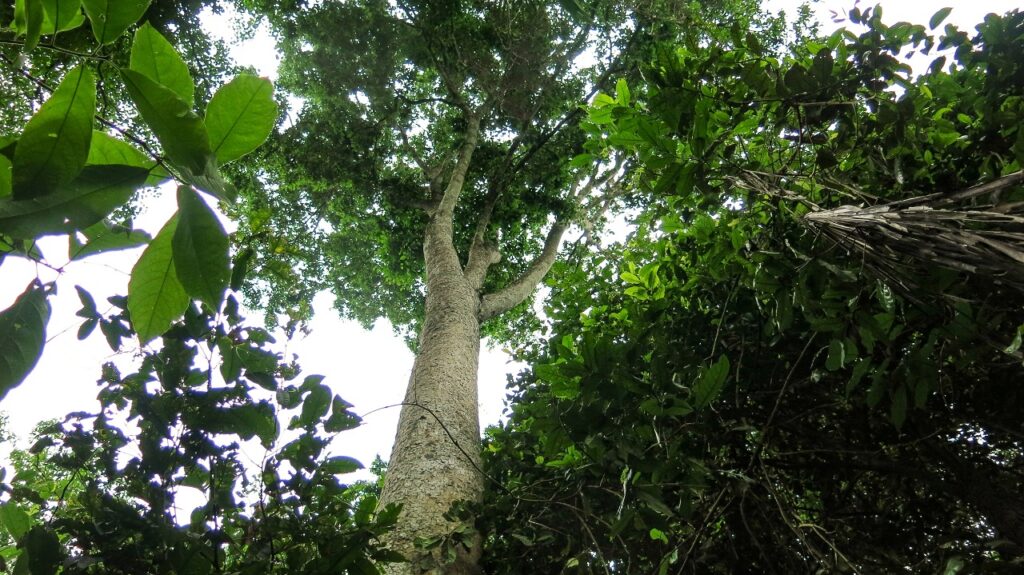
Image by Juan Carlos Valencia for Envol Vert.
- Tamandua is a collective of families and small farmers who create food products from the nuts of the guáimaro tree, a keystone species of Colombia’s tropical dry forest, as well as from other nut-bearing native trees and other plants that can be grown in the shade.
- Guáimaro flour and other tropical dry forest products, produced through a regenerative agroforestry model that provides an alternative to cattle raising and monocropping, are beginning to enter Colombia’s culinary scene as sources of high-quality nutrition.
- This bioeconomy model could help save and expand tropical dry forests and provide a sustainable income for small farmers, proponents say.
- Colombia’s tropical dry forests are home to hundreds of plant and animal species, many of them endemic. They’re also one of the country’s most endangered forest ecosystems, occupying only 8% of their original extent.
BECERRIL, Colombia — “This makes me very happy, this is why we came down from the Sierra, to see the people celebrating the guáimaro tree,” says Orfelina Perez Restrepo, an Indigenous Yupa whose ancestral lands overlap with the lush valleys and rugged ridges of the Serranía del Perijá, a mountain range that runs along Colombia’s northeastern border with Venezuela.
Perez Restrepo has made the three-hour trek down the mountain, along with her eight children, two nieces, sister and cousin, to attend the Festival of Guáimaro in the bustling highway town of Becerril. Held annually for the past nine years, this all-day festivity is filled with dancing, games and even a cooking competition, all centered on guáimaro (Brosimum alicastrum), or the “tree of life,” according to the Yupa.
“We cook these nuts and eat them because they have high nutritional value and even help to heal from sicknesses,” Perez Restrepo says. Known as ramon or nuez Maya (Maya nut) in Mexico, and ojushte in El Salvador, guáimaro has been a dietary staple and source of natural medicine for pre-Colombian societies in the tropical Americas for millennia. But in recent decades it’s become increasingly harder to find, according to Perez Restrepo.

Image by Juan Valencia for Envol Vert.
The guáimaro tree is a keystone species of Colombia’s tropical dry forest, an incredibly biodiverse ecosystem with species adapted to surviving long dry spells between rainy seasons. The tropical dry forest is located predominantly along and near the country’s Caribbean coast, but is also found further south in smaller, disconnected patches.
One of Colombia’s most threatened ecosystems according to the Humboldt Institute, the tropical dry forests are home to more than 2,600 species of plants, 230 species of birds, and 60 mammal species. The latter include seven species of primates, including the critically endangered cotton-top tamarin (Saguinus oedipus), a squirrel-sized monkey with a thick white mane found only in a handful of patches of primary tropical dry forest in Colombia’s Caribbean region.
The guáimaro tree, which thrives along riverbanks, can grow to a height of 45 meters (150 feet) high, provides food and shelter for both humans and animals in the tropical dry forest, and helps fix the soil and protect waterways. But deforestation threatens the tree’s survival: about 65% of the cleared land within the dry tropical forest has become affected by desertification, according to the Humboldt Institute.
But for Perez Restrepo, the Festival of Guáimaro brings hope that the forest is making a comeback.
A community-run agroforestry project
“We are making products from the forest like dulce de guáimaro, dulce de orejero, hummus de orejero, and marmalade of pineapple with camajón, all of which go deliciously on these breads and cookies made with guáimaro flour,” says Ana Flor Hernandez from behind one of the stalls at the festival.
Hernandez grew up in the rural area of Caño Rodrigo, just outside Becerril, on a 160-hectare (395-acre) ranch that’s still 60% forested. She’s a member of the campesino collective Tamandua, created in 2014 and now counting more than 200 individuals and families across four different departments of Colombia’s Caribbean region as its members.
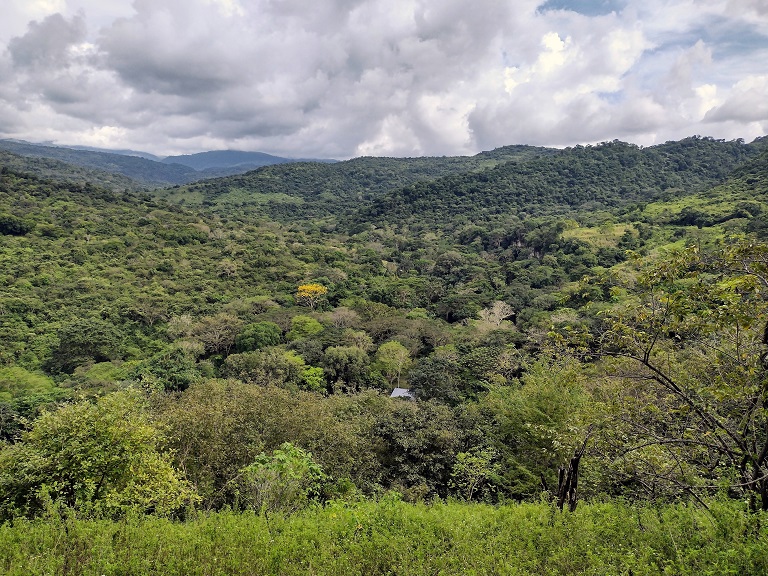
Image by Ocean Malandra.
Tamandua provides communities in and around tropical dry forests an economic alternative to raising cattle and growing staple crops like maize or yuca, both common drivers of deforestation. Instead, the campesinos of Tamandua harvest products from the forest, including guáimaro nuts and several other native nuts like orejero (Enterolobium cyclocarpum) and camajón (Sterculia apetala). They also use regenerative agroforestry techniques to cultivate marketable native species like hibiscus, coconut, citrus fruits, guava, achiote and cacao.
Hernandez says she grew up eating guáimaro nuts as a child because her parents and grandparents had learned how to collect, prepare and consume them from their Yupa neighbors. Now the market price of products like guáimaro flour has been steadily rising, she says. For Hernandez, Tamandua has become a vehicle for “a sustainable way to make a solid income that can be passed on to future generations because it actually expands and preserves the forest ecosystem.”
“Each campesino or family involved in Tamandua has reforested at least a hectare [2.5 acres] of forest,” says Laura Velandia, coordinator of alternative economies for Envol Vert, a French nonprofit running several agroforestry-based reforestation projects in Colombia and Peru. Envol Vert created Tamandua to help fortify and expand existing campesino-led efforts to create a viable market for sustainable products from Colombia´s tropical dry forest.
“The primary focus is always on reforestation, before [of] the economic concerns,” Velandia says. “The first thing we do in the communities is set up a native plant and tree nursery and distribute saplings and seeds to the campesinos to begin the replanting and reforestation of the tropical dry forest ecosystem.”
According to Velandia, this agroforestry system requires less effort yet produces more value than monocrop agriculture, making it not just an ecological solution to deforestation but a viable alternative economic model as well.
“You don’t need to be there watching over the crops for six or eight months at a time, fighting off molds and pests, investing in fertilizers, seeds or herbicides,” she says. “You simply show up during the seasons of the year when the trees are producing and collect the nuts off the ground.”
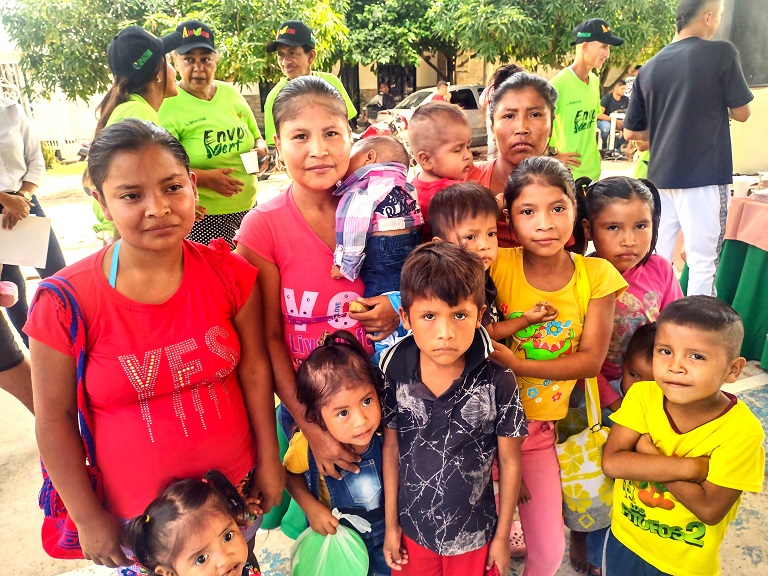
Image by Ocean Malandra.
Velandia says Tamandua and similar agroforestry projects in other regions will be a major step toward building a sustainable agricultural future for Colombia, although for now the market is too small for a big leap.
From forest to kitchen
“It’s the dream of every chef to be able to invent and create new dishes and recipes that will later be used by other chefs and people, and that’s exactly what I am doing with these forest products,” Angelica Saumeth, culinary director for Envol Vert Colombia, tells Mongabay between activities at the Festival of Guáimaro.
“I take my creations now to communities to show them what the possibilities are with these products. I teach them how to cook these plates I have invented and how they can feed their families with sustainable forest products,” she says, adding that she’s also met with some of Colombia’s top chefs to collaborate on more uses and recipes.
Tapping into an emerging bioregional culinary scene in Colombia, Tamandua now supplies several restaurants in the country’s capital with raw products like guáimaro flour.
“We use guáimaro flour for everything, from crusts for chicken and meats, to flour to make empanadas, to dough for other baked goods, and even as colors and flavoring for things like ice cream,” says Eduardo Martinez, chef, agronomist and co-founder of MiniMal, a high-end restaurant in Bogota’s hip Chapinero Alto neighborhood.
Martinez says reconnecting with bioregional native foods like guáimaro is actually a process of decolonization that will not only “replace extractive economies, like timber, or cocaine production,” but also help make poor rural communities food independent and address issues like malnutrition; he says the latter is absent where communities have returned to ancestral foods like guáimaro.
Saumeth, who is also a registered nutritionist, agrees. Guáimaro consists of more than 40% protein, and has high levels of iron, healthy omega fats and other important nutrients, she tells Mongabay. It is quite literally “the tree of life,” Saumeth says. “Imagine a superfood that makes us healthier and provides high levels of nutrition as well as a stable economy for rural areas and also promotes saving the tropical dry forest at the same time.”
An up-and-coming bioeconomy
The concept of the bioeconomy focuses on products and processes that benefit everyone involved — the consumers, the producers, and the ecosystem — says Felipe Garcia Cardona, head of the Biodiversity Sciences Program at the Humboldt Institute, where his team is looking for ways to shift Colombia onto a more sustainable path.
“Our dominant forms of food production, both cattle grazing and monocultures, are destructive to our biodiversity and it is time that we address this,” he says. “These trees in the tropical dry forest could be used not just for gastronomy, but also for cosmetics, nutritional supplements, building materials, and much more.”
In the case of guáimaro, almost every part of the tree can be used, Garcia Cardona tells Mongabay in a video call from his office in Bogotá.
“Although we single out guáimaro because of its tremendous potential, a sustainable bioeconomy is actually more concerned with a portfolio of products than a single product, in this case the products of the tropical dry forest, which are also all connected to the story of this forest and its conservation,” Garcia Cardona says.
Ildefonso Guzman Hererra joined Tamandua three years ago but has been reforesting his 50 hectares (124 acres) of land in the Caño Rodrigo area of Becerril for nearly a decade.
Apart from his guáimaro trees, he practices regenerative agroforestry on a 5-hectare (12-acre) parcel, aiming to create a model that other campesinos can copy. On this patch of land he grows organic cacao, achiote, guava, pineapple and lemon, alongside native medicinal plants like anamú.
“It’s a sustainable economic and ecological model that creates a good way of life for the campesino and protects the ecosystem that many different animals, birds and insects depend on,” Guzman Herrera tells Mongabay.
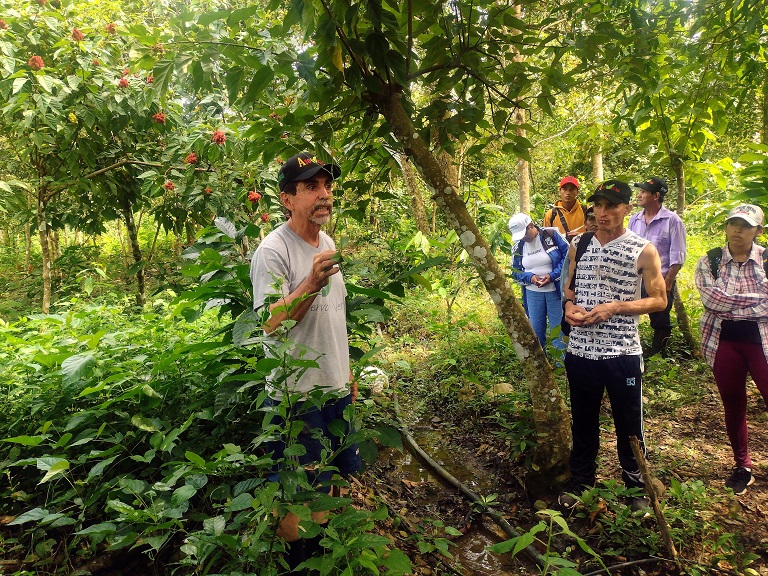
Image by Ocean Malandra.
Garcia Cardona says Tamandua is a great example of how these smaller producers can work together to create a large impact and form a bioeconomy based on a particular region and its ecosystem. In theory, he says, this should be done by the government.
“Unfortunately, Colombia suffers from high levels of corruption, and in regions like the Caribbean, the state is not doing its job. So, nonprofits are stepping in to provide a larger support network and infrastructure to these budding bioeconomies,” he says.
With real help from the state, Garcia Cardona says guáimaro and other tropical forest species could be part of not just a national market, but an international one.
A just and sustainable Colombia on the horizon
“Creating products from the tropical dry forest instead of cutting it down is the perfect example of what a new future for Colombia will look like,” Imelda Daza, a senator representing the department of Cesar, where Becerril is located, tells the crowd gathered at the Festival of Guáimaro.
“This is the change from an economy based on extraction to an economy based on production, that [President Gustavo] Petro is talking about,” she adds.
Daza is part of Unión Patriótica, the party behind Petro, formed by ex-revolutionary members, including the FARC, in the 1980s. After 20 years in exile in Switzerland because of death threats, Daza returned to Colombia in 2015 to help sign the country’s peace process and run for senator in her native department.
“The change is this: we are going to stop looking beneath the soil for our economy,” she tells the festival crowd. “No more mining and fracking so that some people can become rich at the expense of the environment and our communities. We are going to start using the soil itself as the basis of our economy, an economy based on producing healthy food for all, just as you are doing here, which also protects our country’s unparalleled biodiversity.”
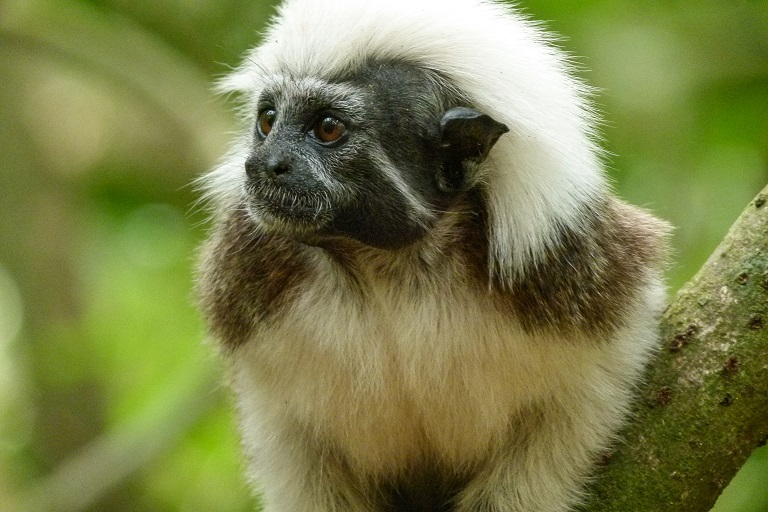
Image by Juan Carlos Valencia for Envol Vert.
Agrarian reform was one of Petro’s main campaign promises. His administration has talked of banning fracking and mining, and is planning on purchasing 3 million hectares (7.4 million acres) of land from the country’s largest cattle ranching organization, and turning most of it over to landless and displaced campesinos. The goal is to more than double Colombia’s agricultural output with the help of small independent farmers. Petro has vowed to back sustainable and ecological agricultural methods.
According to Velandia from Envol Vert, a real investment from the government that would transform the entire country’s agricultural infrastructure could help guáimaro flour and other Tamandua products become staple foods for Colombians and a major driving force for preserving and reforesting the tropical dry forest at the same time.
“Just like the government has invested in monocultures and other forms of agriculture that are outdated and in many cases destructive, they now need to focus on real initiatives that involve productive agroforestry systems that will provide food for large numbers of people in the most sustainable way,” she says. “It would transform society.”



